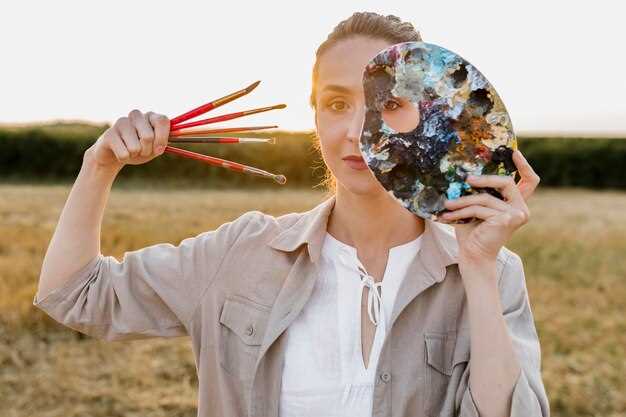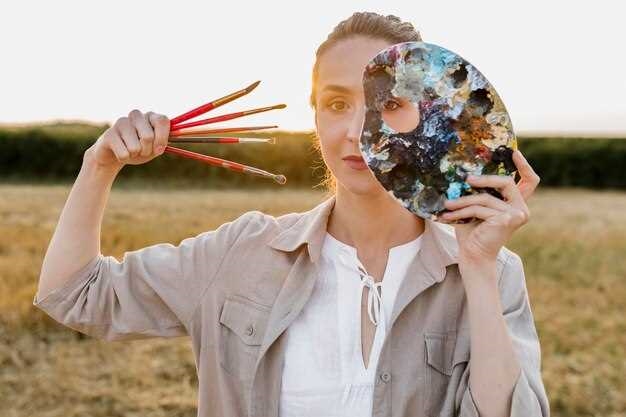
Art, in all its forms, holds a profound significance in our society. It serves as a testament to human creativity, cultural heritage, and historical events. However, the delicate nature of artistic masterpieces necessitates meticulous care and attention to ensure their longevity. This is where the field of art conservation comes into play, employing a range of techniques and expertise to safeguard these invaluable treasures for future generations.
While the primary goal of art conservation is to preserve and restore artworks, another crucial aspect often overlooked is the need for comprehensive insurance coverage. Artworks are not only vulnerable to natural disasters, theft, and accidents but also face the inevitable passage of time. Therefore, it is imperative to establish a strong connection between the efforts of conservation professionals and the protection provided by insurance policies.
Preservation efforts encompass a wide array of activities, including examination, documentation, cleaning, and restoration. Conservation experts employ their expertise to analyze the materials, techniques, and condition of artworks, ensuring that they are safeguarded from further deterioration. Through meticulous research and analysis, these professionals develop innovative methods to slow down the aging process and mitigate the effects of environmental factors.
However, even the most comprehensive conservation efforts cannot eliminate the inherent risks associated with owning and displaying valuable artworks. This is where insurance steps in, providing a safety net to protect against unforeseen circumstances that could potentially lead to irreparable damage or loss.
The Importance of Art Conservation in Preserving Cultural Heritage
Preserving the rich tapestry of our cultural heritage is of utmost significance, as it safeguards the legacy of our ancestors and provides a window into the past for future generations. The careful and meticulous practice of art conservation plays a pivotal role in ensuring the longevity and integrity of these invaluable cultural artifacts, allowing us to delve into the depths of history and appreciate the beauty and significance they hold.
By employing a range of specialized techniques and expertise, art conservation professionals work tirelessly to protect and restore artworks, manuscripts, sculptures, and other cultural treasures. Through their meticulous efforts, they not only safeguard the physical condition of these artifacts but also ensure that their historical and cultural significance remains intact.
Art conservation serves as a bridge between the past and the present, allowing us to connect with our roots and understand the diverse cultures that have shaped our world. It enables us to appreciate the craftsmanship, artistic techniques, and materials used by our ancestors, providing valuable insights into their lives, beliefs, and societal norms.
Furthermore, art conservation plays a vital role in fostering a sense of collective identity and pride in our cultural heritage. By preserving and showcasing these treasures, we can celebrate the achievements of our forefathers and honor the diverse artistic traditions that have flourished throughout history. This preservation effort not only enriches our understanding of the past but also contributes to the cultural vibrancy of our present society.
Without the dedicated efforts of art conservation professionals, our cultural heritage would be at risk of deterioration, loss, or irreversible damage. By recognizing the importance of art conservation, we can ensure that future generations will have the opportunity to experience and appreciate the rich tapestry of our collective history, fostering a deeper connection to our roots and a greater appreciation for the value of cultural heritage.
Understanding the Risks Faced by Artworks and Collectibles
Exploring the vulnerabilities inherent in the world of artworks and collectibles is crucial for comprehending the challenges they encounter. By delving into the perils that these valuable possessions face, we can gain a deeper understanding of the risks involved in their preservation and protection.
1. Environmental Hazards
Artworks and collectibles are constantly exposed to a range of environmental hazards that can pose significant risks. Factors such as temperature fluctuations, humidity levels, exposure to light, and air quality can all have detrimental effects on the condition and longevity of these precious items. Understanding the impact of these hazards is essential for implementing appropriate conservation measures.
2. Physical Damage
Artworks and collectibles are susceptible to various forms of physical damage, including accidental impacts, mishandling, and transportation-related incidents. The fragility of certain materials and the intricate nature of some pieces make them particularly vulnerable. Recognizing the potential sources of physical damage allows for the development of preventive strategies and the implementation of proper handling protocols.
3. Theft and Loss
Theft and loss are constant concerns in the world of art and collectibles. These valuable items can be attractive targets for criminals due to their high market value and the potential for anonymity in the art market. Understanding the risks associated with theft and loss is crucial for implementing security measures, including surveillance systems, secure storage facilities, and comprehensive insurance coverage.
4. Natural Disasters
Natural disasters, such as fires, floods, earthquakes, and hurricanes, pose significant risks to artworks and collectibles. These catastrophic events can result in irreparable damage or complete loss. Developing disaster preparedness plans, including proper storage, evacuation procedures, and insurance coverage, is essential for mitigating the potential impact of natural disasters.
5. Deterioration and Aging
Over time, artworks and collectibles naturally deteriorate and age. Factors such as the materials used, the techniques employed, and the conditions in which they are stored can all contribute to this process. Understanding the inherent vulnerabilities of different types of artworks and collectibles allows for the implementation of appropriate conservation practices to slow down deterioration and prolong their lifespan.
- Understanding the risks faced by artworks and collectibles is crucial for their preservation and protection.
- Environmental hazards, physical damage, theft and loss, natural disasters, and deterioration are key risks to consider.
- Implementing appropriate conservation measures, security protocols, disaster preparedness plans, and insurance coverage can help mitigate these risks.
The Role of Art Conservation in Mitigating Risks and Preventing Damage
Art conservation plays a crucial role in minimizing potential hazards and safeguarding valuable artworks from harm. By employing various techniques and strategies, conservators actively work towards mitigating risks and preventing damage to ensure the longevity and preservation of artistic treasures.
One of the primary objectives of art conservation is to identify and address potential threats that artworks may face. Through meticulous examination and analysis, conservators assess the vulnerabilities of art pieces, considering factors such as environmental conditions, handling procedures, and display methods. By understanding these risks, conservators can develop tailored conservation plans to minimize the likelihood of damage.
Conservation efforts also involve implementing preventive measures to protect artworks from deterioration. This includes establishing appropriate storage conditions, such as controlling temperature and humidity levels, to prevent the growth of mold or the degradation of materials. Additionally, conservators may recommend specific handling guidelines to minimize physical damage caused by improper transportation or display techniques.
Furthermore, art conservation plays a vital role in risk management by conducting regular inspections and maintenance. Through routine examinations, conservators can detect early signs of deterioration or potential risks, allowing for timely interventions to prevent further damage. This proactive approach helps to extend the lifespan of artworks and reduce the need for extensive restoration in the future.
Conservators also collaborate with other professionals, such as insurers and art appraisers, to assess the value of artworks and determine appropriate insurance coverage. By providing accurate documentation and condition reports, conservators contribute to the accurate valuation of artworks, ensuring that they are adequately protected in case of unforeseen events.
In conclusion, art conservation plays a pivotal role in mitigating risks and preventing damage to artworks. Through careful analysis, preventive measures, regular inspections, and collaboration with other experts, conservators contribute to the long-term preservation and protection of artistic treasures for future generations to appreciate and enjoy.
The Need for Adequate Insurance Coverage for Art Collections
Ensuring the proper protection and security of valuable art collections is of utmost importance. In order to safeguard these priceless treasures, it is essential to have adequate insurance coverage in place. This article explores the significance of obtaining comprehensive insurance policies that offer financial protection against potential risks and damages that may befall art collections.
Factors to Consider When Insuring Artworks and Collectibles
When it comes to safeguarding your valuable artworks and collectibles, insurance plays a crucial role in providing financial protection. However, insuring these items requires careful consideration of various factors to ensure comprehensive coverage. This section explores the key aspects to keep in mind when insuring your art collection.
1. Valuation and Appraisal
Accurate valuation and appraisal of your artworks and collectibles are essential for determining the appropriate insurance coverage. It is crucial to work with qualified appraisers who have expertise in assessing the value of different types of art. Their evaluation will help establish the replacement cost or market value of your items, which will directly impact the insurance premium.
2. Security Measures
Implementing adequate security measures is vital to minimize the risk of theft or damage to your art collection. Insurance providers often require specific security measures to be in place, such as alarm systems, surveillance cameras, and secure storage facilities. By investing in robust security measures, you not only protect your artworks but also demonstrate your commitment to risk mitigation, which can positively influence insurance premiums.
3. Conservation and Preservation Efforts
Proper conservation and preservation of your artworks and collectibles can significantly impact their insurability and value. Insurance companies may require evidence of regular maintenance and conservation efforts to ensure the longevity of the items. Implementing appropriate conservation practices, such as controlling temperature and humidity levels, can help mitigate the risk of deterioration and enhance the insurability of your collection.
4. Coverage Options

Understanding the different coverage options available is crucial when insuring your art collection. Policies can vary in terms of coverage limits, deductibles, and exclusions. It is essential to carefully review the policy terms and conditions to ensure that your specific needs are adequately addressed. Consider factors such as transit coverage, worldwide coverage, and coverage for loaned or borrowed artworks to ensure comprehensive protection.
5. Documentation and Records
Maintaining detailed documentation and records of your art collection is essential for insurance purposes. This includes photographs, descriptions, provenance information, and any relevant certificates of authenticity. These records serve as crucial evidence in the event of a claim and help streamline the insurance process. Regularly updating and organizing your documentation ensures that you have accurate and up-to-date information readily available.
By considering these factors when insuring your artworks and collectibles, you can ensure that you have comprehensive coverage that adequately protects your valuable assets.
The Benefits of Collaborating with Art Conservators for Insurance Companies
When it comes to protecting valuable assets, such as artwork, insurance companies play a crucial role in providing coverage and financial security. However, the intricacies involved in assessing the value and condition of art require specialized knowledge and expertise. This is where collaborating with art conservators can offer significant benefits for insurance companies.
Enhanced Risk Assessment
By collaborating with art conservators, insurance companies gain access to a wealth of knowledge and expertise in assessing the condition and authenticity of artwork. Conservators are trained professionals who specialize in the preservation and restoration of art, and their insights can greatly enhance the accuracy of risk assessments. Through their understanding of materials, techniques, and historical context, conservators can provide valuable information on the potential risks associated with specific artworks, helping insurance companies make more informed decisions.
Improved Claims Handling
Art conservators can also play a crucial role in the claims handling process for insurance companies. In the unfortunate event of damage or loss to insured artwork, conservators can provide expert opinions on the extent of the damage, potential restoration options, and the impact on the artwork’s value. This collaboration ensures that insurance companies have access to accurate and reliable information when processing claims, leading to fair and efficient settlements.
Furthermore, by involving conservators in the claims handling process, insurance companies can demonstrate their commitment to preserving cultural heritage and supporting the art community. This can enhance their reputation and foster positive relationships with policyholders, art collectors, and the wider art industry.
In conclusion, collaborating with art conservators offers numerous benefits for insurance companies. From enhanced risk assessment to improved claims handling, the expertise and knowledge of conservators can significantly contribute to the accurate valuation and protection of valuable artwork. By recognizing the value of this collaboration, insurance companies can ensure the preservation of cultural heritage while providing comprehensive coverage for their clients.
